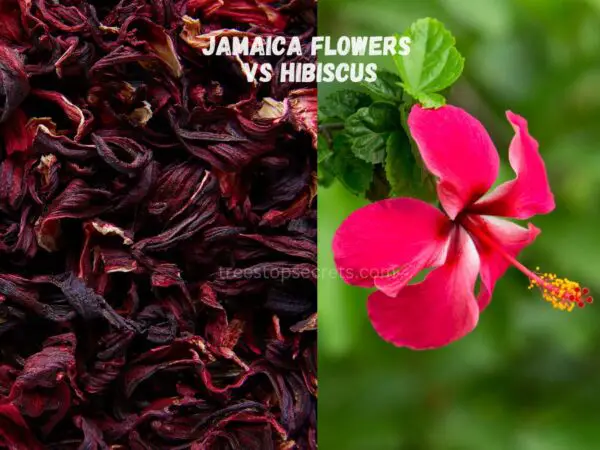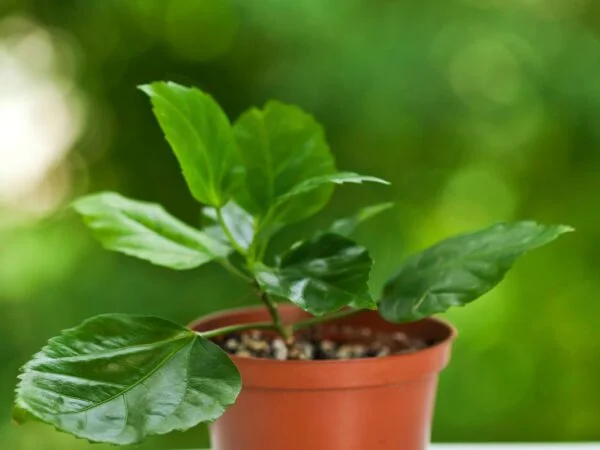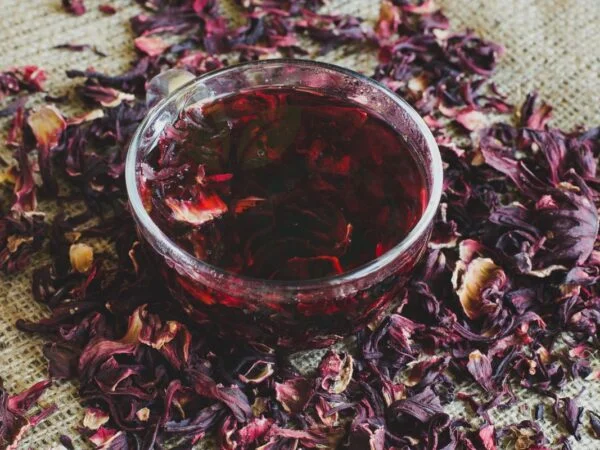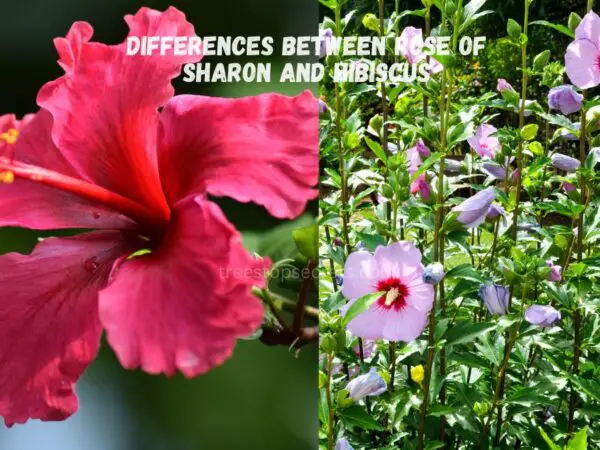Did you know that hibiscus plants can thrive when planted directly in the ground? You might be surprised to learn that these vibrant flowers can flourish outdoors with the right care and attention.
Planting hibiscus in the ground offers numerous benefits, including increased root space, improved stability, and enhanced access to nutrients from the soil. In this comprehensive guide, we will explore the step-by-step process of successfully planting hibiscus in your garden or yard.
Ready to transform your outdoor space with stunning hibiscus blooms? Stay tuned for expert tips and valuable insights on how to plant and care for hibiscus plants in your garden. EOL (
Key Takeaways
-
Understand the needs of hibiscus plants before planting them in the ground to ensure proper care and growth.
-
Prepare the planting area by choosing a sunny location with well-draining soil and adequate space for the hibiscus to thrive.
-
Follow the correct planting process, including digging a hole, placing the plant, and backfilling with soil while watering thoroughly.
-
Provide post-planting care such as regular watering, fertilizing, and pruning to promote healthy growth and blooming.
-
Consider seasonal variations in temperature and sunlight exposure to adjust care routines accordingly for optimal hibiscus health.
-
Troubleshoot common issues like yellowing leaves or pests promptly to maintain the plant's well-being.
Understanding Hibiscus
Types Varieties
Hibiscus plants come in various varieties suitable for planting in the ground. These include the Tropical Hibiscus, known for its vibrant colors and large flowers, and the Hardy Hibiscus, which thrives in colder climates. Each type has unique characteristics, such as flower size, color range, and growth habits. When selecting a hibiscus variety, consider your region's climate and soil conditions to ensure optimal growth.
-
Tropical Hibiscus
-
Hardy Hibiscus
-
Rose of Sharon
Growth Requirements
To ensure healthy growth, hibiscus plants planted in the ground require specific care. They need nutrients like nitrogen, phosphorus, and potassium for blooming and overall health. Regular watering is crucial, especially during dry periods. Prune dead or overgrown branches to promote new growth. Proper fertilization and pest control are essential for maintaining a thriving hibiscus garden.
-
Nutrient-rich soil
-
Adequate watering
-
Pruning for new growth
Climate Preferences
Hibiscus plants thrive in warm climates with plenty of sunlight. They prefer temperatures between 60-90°F (15-32°C) and high humidity levels. In cooler regions, consider planting hibiscus in pots that can be moved indoors during winter months. Adjust care routines based on climate conditions; for example, increase watering during hot spells or protect plants from frost in colder climates.
-
Warm climates with sunlight
-
Temperature range: 60-90°F (15-32°C)
-
High humidity levels
Preparing for Planting
Choosing Location
When planting hibiscus, select a location with full sun exposure for at least six hours daily. Consider well-draining soil to prevent waterlogging, crucial for hibiscus health. Look for spots away from strong winds to avoid damage.
To ensure optimal growth, test the soil in your chosen area. Amend it with organic matter if needed to improve nutrient levels. When selecting a spot, prioritize areas with good air circulation and minimal competition from other plants.
Soil Preparation
Start by testing the soil pH to determine its acidity or alkalinity. Adjust it as needed to create an ideal environment for hibiscus roots. Enhance drainage by adding compost or sand to loosen compacted soil.
Before planting, ensure the soil is rich in nutrients by incorporating well-decomposed organic matter. This step is crucial for supporting healthy root development and overall plant growth. Regularly monitor the soil moisture levels to prevent overwatering or drought stress.
Timing Considerations
The best time to plant hibiscus in the ground is during the spring months, after the last frost has passed. Avoid extreme temperatures that can shock young plants. Monitor weather patterns to anticipate any unexpected changes that may impact growth.
Seasonal variations play a significant role in hibiscus growth cycles. Understanding these dynamics helps in planning maintenance tasks like pruning and fertilizing effectively. Aim to plant hibiscus when temperatures are moderate for successful establishment and blooming.
Planting Process
Digging Holes
When planting hibiscus, dig holes twice as wide as the root ball but not deeper than it. Ensure proper drainage by breaking up the soil at the base. This aids in root establishment and prevents waterlogging issues.
To promote healthy growth, hibiscus holes should be shallow, matching the depth of the container it was grown in. Avoid planting too deep to prevent suffocating the roots. Loosening the sides of the hole encourages outward root growth.
For optimal plant development, ensure good drainage by amending heavy clay soil with organic matter. This prevents water accumulation around the roots, reducing the risk of rot. Consider adding perlite or sand for improved aeration and drainage.
Planting Tips
Begin planting by gently removing the hibiscus from its pot and placing it in the center of the prepared hole. Fill around the root ball with soil mixture until secure. Water thoroughly to settle the soil and remove air pockets.
Water newly planted hibiscus generously to help establish roots effectively. Position them where they receive full sun for at least six hours daily for vibrant blooms. Mulch around the base to retain moisture and suppress weeds.
Key considerations for successful hibiscus planting include regular watering, especially during dry spells, and fertilizing every 4-6 weeks during growing seasons. Prune dead or overgrown branches to encourage new growth and maintain shape.
Watering Needs
Hibiscus plants require consistent watering to thrive in ground plantings. Water deeply once or twice a week, depending on weather conditions, to encourage deep root growth. Adjust frequency based on soil moisture levels.
To maintain healthy soil moisture levels, water until it reaches a depth of 6-8 inches around the plant's root zone. Avoid frequent shallow watering that can lead to surface root development and weaken plants over time. Monitor soil moisture regularly for optimal growth.
For successful hibiscus care, consider using a soaker hose or drip irrigation system for efficient watering without wetting foliage excessively. Mulching helps retain moisture and regulate soil temperature for overall plant health.
Post-Planting Care
Fertilization Schedule
After planting hibiscus in the ground, fertilizing is crucial for vibrant blooms and healthy growth. Hibiscus plants are heavy feeders, requiring regular nutrients to thrive. Use a balanced fertilizer with equal parts of nitrogen, phosphorus, and potassium.
To ensure optimal growth, fertilize hibiscus every two weeks during the growing season. Incorporate a slow-release fertilizer to provide continuous nourishment. Water the plant before and after applying fertilizer to prevent root burn.
-
Best fertilizers: Choose a water-soluble 10-10-10 or 20-20-20 fertilizer.
-
Application methods: Dilute the fertilizer as per instructions and apply around the base of the plant.
-
Schedule: Begin fertilizing in early spring and continue until late summer.
Pruning Practices
Pruning hibiscus plants post-planting promotes bushier growth and enhances flowering. Regular pruning helps maintain the desired shape and size of the plant. To encourage new growth, prune after each blooming cycle.
When pruning hibiscus, focus on removing dead or damaged branches to improve air circulation within the plant. Trim back leggy growth to stimulate new shoots and increase flower production.
-
Benefits: Pruning improves overall plant health by reducing disease risk and promoting vigorous growth.
-
Shaping tips: Trim back one-third of the plant's height while maintaining a balanced shape.
-
Timing: Prune hibiscus in late winter or early spring before new growth emerges.
Pest Management
Common pests like aphids, spider mites, and whiteflies can harm hibiscus plants in the ground post-planting. Regularly inspect your plants for signs of pest infestation such as yellowing leaves or sticky residue on foliage.
Combat pests using organic methods like neem oil or insecticidal soap. For severe infestations, consider chemical treatments like systemic insecticides under professional guidance.
-
Prevention tips: Keep the garden clean, remove debris, and avoid over-fertilizing to deter pests.
-
Organic control: Spray neem oil diluted in water on affected areas every few days.
-
Chemical options: Use insecticides sparingly and strictly follow application guidelines.
Seasonal Considerations
Winter Care
During the winter, hibiscus plants need special attention to survive the cold. Protect them by bringing them indoors or covering them with blankets or burlap. Ensure they receive enough sunlight even during the colder months. Overwintering in colder climates can be challenging but is possible with proper care.
In colder regions, hibiscus plants are susceptible to frost damage. To prevent this, consider using frost cloth or creating a makeshift greenhouse. Water hibiscus less frequently in winter to avoid root rot. Pruning dead or damaged branches can help promote healthy growth come spring.
Summer Maintenance
When summer arrives, focus on maintaining the health of your hibiscus plants. Water them regularly, especially during hot weather, to keep the soil moist but not waterlogged. Fertilize every few weeks with a balanced fertilizer to encourage blooming and growth. Prune hibiscus plants throughout the summer to remove dead blooms and shape the plant.
To ensure your hibiscus thrives in the summer heat, provide adequate shade during peak sunlight hours. Mulch around the base of the plant to retain moisture and regulate soil temperature. Regularly inspect your hibiscus for pests like aphids or spider mites and take appropriate action if needed.
Troubleshooting Common Issues
Yellow Leaves
Yellow leaves on hibiscus plants in the ground can signal various issues. Overwatering is a common culprit, leading to root rot and nutrient deficiencies. Pests like aphids or spider mites can also cause yellowing. To diagnose, check soil moisture and inspect for pests.
To treat yellow leaves effectively, adjust watering schedules to prevent waterlogging. Prune affected areas and apply organic fertilizers rich in nitrogen. Ensure proper drainage to avoid water accumulation around roots.
Prevent yellow leaves by maintaining well-draining soil, watering hibiscus only when the top inch of soil is dry, and regularly inspecting plants for pests.
Stunted Growth
Stunted growth in hibiscus plants may result from poor soil quality, inadequate sunlight, or lack of nutrients. Identify issues by examining soil conditions, sunlight exposure, and signs of nutrient deficiencies like pale leaves.
Address stunted growth by improving soil quality with organic matter and ensuring hibiscus receive adequate sunlight. Fertilize with a balanced formula to provide essential nutrients for healthy growth.
Promote healthy growth by mulching around plants to retain moisture, regular fertilization during the growing season, and pruning to encourage new growth.
Flowering Problems
Various factors can lead to flowering problems in hibiscus plants grown in the ground. Issues such as improper pruning, insufficient sunlight, or nutrient imbalances can hinder blooming. Troubleshoot by assessing pruning practices, sunlight exposure, and nutrient levels in the soil.
Resolve flowering problems by adjusting pruning techniques to promote flower bud development. Ensure hibiscus receive at least 6 hours of direct sunlight daily and feed with a phosphorus-rich fertilizer to enhance blooming.
Encourage abundant blooms by deadheading faded flowers regularly, providing consistent watering during dry spells, and applying a bloom-boosting fertilizer during the blooming season.
Enhancing Bloom Production
Sunlight Exposure
Hibiscus plants require ample sunlight for optimal bloom production. Adequate sunlight exposure ensures vibrant and abundant blooms. To ensure your hibiscus plants receive sufficient sunlight, plant them in an area that gets at least six hours of direct sunlight daily. Adjust the positioning based on the climate and season to maximize sunlight exposure.
For regions with intense summer heat, consider providing partial shade during the hottest part of the day to prevent sunburn on the leaves. In contrast, during cooler seasons, ensure there are no obstructions blocking the sunlight from reaching the plants. By monitoring and adjusting sunlight exposure accordingly, you can promote healthy growth and abundant blooms in your hibiscus plants.
Nutrient Boosts
Providing nutrient boosts is crucial for enhancing bloom production in hibiscus plants. These boosts contribute to overall plant health, leading to more robust blooms. Hibiscus plants require a balanced mix of nitrogen, phosphorus, and potassium for healthy growth and flowering. Nitrogen supports lush foliage, phosphorus aids in flower formation, and potassium enhances overall plant health.
To supplement these essential nutrients, consider using a well-balanced fertilizer designed specifically for flowering plants like hibiscus. Alternatively, organic amendments such as compost or manure can also provide a natural source of nutrients for your plants. Regularly feeding your hibiscus with the right nutrients will result in vigorous growth and vibrant blooms throughout the blooming season.
Hibiscus Companion Plants
Beneficial Companions
When planting hibiscus in the ground, consider companion plants like marigolds and petunias. These flowers not only add aesthetic value but also repel harmful pests that could affect hibiscus growth. Incorporating herbs like basil can improve soil quality and provide a natural defense against pests.
For enhanced bloom production, pairing hibiscus with lavender or roses can attract pollinators, promoting cross-pollination and resulting in more abundant blooms. Furthermore, planting nasturtiums near hibiscus can deter aphids and whiteflies, safeguarding the plant's health naturally.
Selecting compatible companions for hibiscus involves considering factors like sunlight requirements and soil preferences. Ensure that the companion plants chosen thrive in similar conditions to hibiscus to create a harmonious environment for all species involved.
Avoiding Harmful Pairings
Avoid planting hibiscus near black walnut trees as they release toxins that can inhibit hibiscus growth. Similarly, steer clear of planting hibiscus alongside tomatoes or peppers, as they may compete for nutrients and water, hindering both plants' development.
Harmful pairings around hibiscus can lead to stunted growth, reduced blooming, and overall poor plant health. To prevent these issues, it is essential to research and understand which plants are incompatible with hibiscus to ensure optimal growth conditions.
Creating a harmonious plant environment around hibiscus involves strategic planning and consideration of each plant's needs. By avoiding harmful pairings and selecting beneficial companions, you can cultivate a thriving garden where each plant supports the others' growth.
Landscape Integration
Design Ideas
When planning your landscape, consider various zones and areas suitable for planting hibiscus to ensure optimal growth. Experiment with different arrangements, such as grouping hibiscus plants together for a vibrant focal point. Integrate hibiscus with other companion plants like lavender or rosemary to create a visually appealing garden bed.
Enhance your outdoor space by incorporating hibiscus plants in containers, hanging baskets, or as border plants along walkways. Utilize hibiscus in mixed plantings with contrasting foliage textures and heights for added interest. Create a tropical oasis by combining hibiscus with palm trees or ferns in shaded areas of your garden.
Color Coordination
Coordinate the vibrant hues of hibiscus flowers with your garden design by selecting complementary colors that enhance the overall aesthetic. Pair red hibiscus varieties with green foliage plants for a striking contrast or opt for a monochromatic scheme using varying shades of pink hibiscus blooms. Incorporate white hibiscus flowers to brighten shady corners and create a sense of tranquility.
Experiment with color combinations by mixing different hibiscus cultivars to create stunning displays of contrasting and harmonious colors. Use color wheels as a guide to selecting colors that work well together and create visual impact in your garden. Consider planting yellow hibiscus near blue flowering plants for an eye-catching display that attracts butterflies and hummingbirds.
Summary
You've learned the ins and outs of planting hibiscus in your garden. From understanding the plant's needs to troubleshooting common issues, you're now equipped to ensure your hibiscus thrives. Remember the importance of proper care, seasonal adjustments, and choosing the right companion plants to enhance bloom production.
Now it's time to get your hands dirty and start planting those beautiful hibiscus flowers. Follow the steps outlined, provide the necessary care, and watch your garden transform into a vibrant oasis. Share your newfound knowledge with fellow gardening enthusiasts and spread the joy of cultivating stunning hibiscus blooms in your landscape.
Frequently Asked Questions
Can hibiscus plants survive in the ground during winter?
Yes, hibiscus plants can survive in the ground during winter in warmer climates. However, it is recommended to provide protection such as mulching or covering them during colder temperatures to help them thrive.
How often should I water my hibiscus plant when planted in the ground?
Water your hibiscus plant deeply once a week if there is no rainfall. Adjust watering frequency based on weather conditions and soil moisture levels to prevent overwatering or underwatering, which can stress the plant.
Do hibiscus plants need direct sunlight when planted in the ground?
Yes, hibiscus plants thrive in full sun exposure when planted in the ground. Ensure they receive at least 6-8 hours of direct sunlight daily for optimal growth and blooming. In partial shade, they may not bloom as profusely.
Should I fertilize my hibiscus plant after planting it in the ground?
Fertilize your hibiscus plant after planting with a balanced fertilizer high in potassium to promote blooming. Apply fertilizer every 4-6 weeks during the growing season but avoid excessive nitrogen, which can lead to lush foliage but fewer blooms.
How can I protect my hibiscus plant from pests and diseases when planted in the ground?
Regularly inspect your hibiscus plant for signs of pests like aphids or diseases such as powdery mildew. Use organic pest control methods or appropriate fungicides if needed. Proper spacing, good air circulation, and healthy soil can also help prevent common issues.
Image Source: Paid image from CANVA




